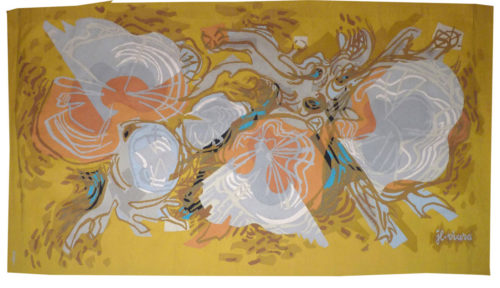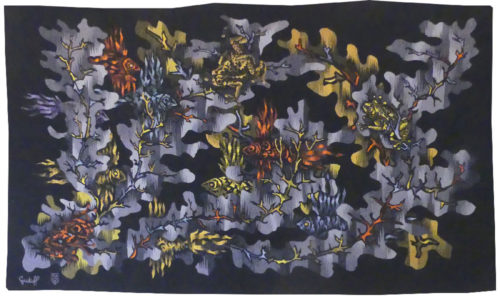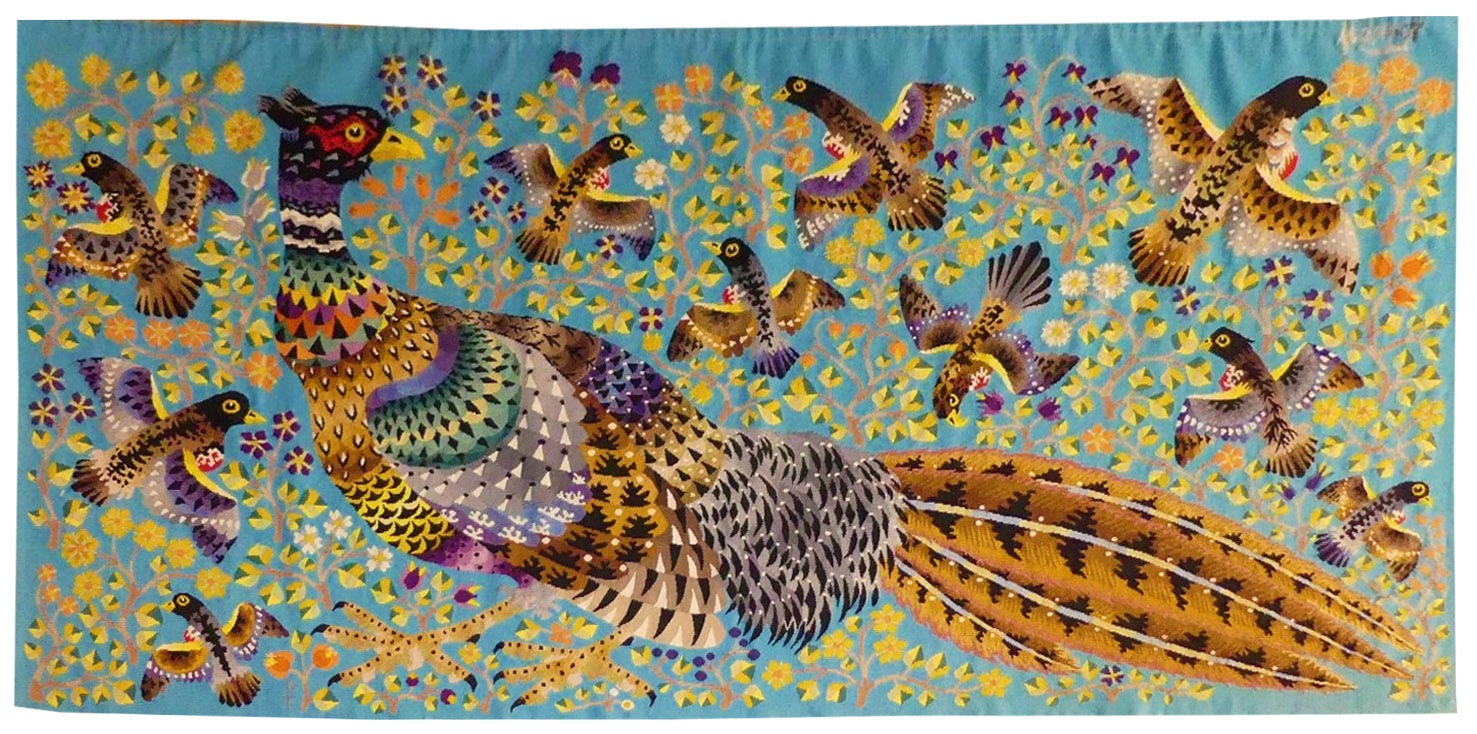Aubusson tapestry woven by the Pinton workshop.
With signed label.
Circa 1960.
Perrot began his career as a cartoon designer at the end of the war, making almost 500 cartoons including numerous commissions from the state, most of which were woven at Aubusson. His style which is particularly rich and decorative is eminently recognisable : a crowd of butterflies or birds, most often, stands out against a background of vegetation, reminiscent of the millefleurs tapestries (which would also inspire Dom Robert).
The ornithological subject, the abundance of motifs inspired by medieval « mille-fleurs » tapestries and the plain background (in this case, using the famous ‘Perrot blue’ as it was known in the Pinton workshops, repeatedly used in numerous cartoons) make our tapestry an exemplary model of Perrot's art from the 1960s onwards.
Bibliography :
Tapisseries, dessins, peintures, gravures de René Perrot, Dessein et Tolra, 1982
Cat. Expo. René Perrot, mon pauvre cœur est un hibou, Aubusson, Cité de la Tapisserie, 2023




